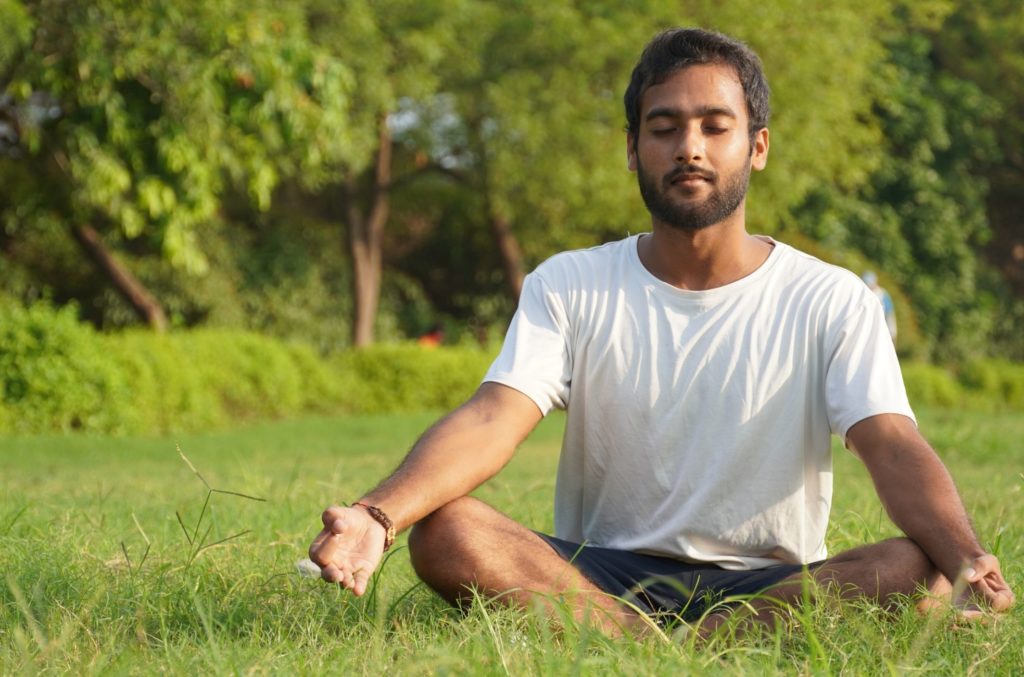Summary
- Anxiety and depression can impact daily life, making it challenging to engage in enjoyable activities. However, deliberately participating in pleasurable activities has been shown to significantly enhance mental health and well-being.
- Distress tolerance skills are crucial for managing intense emotional triggers effectively. They enable individuals to navigate periods of heightened distress without succumbing to impulsive reactions that may exacerbate the situation.
- Distinguishing between stress and distress is important. While stress is a normal response to challenging situations, distress occurs when stress becomes overwhelming or persistent, leading to significant emotional suffering and disruption in daily life.
- Psychological distress manifests in various ways, including sleep disturbances, fatigue, changes in appetite, physical symptoms without a clear cause, and heightened emotional responses such as anger or compulsive behaviors.
- Distress tolerance encompasses a range of strategies designed to help individuals cope with overwhelming emotions and distressing situations. These techniques, often integrated into therapies like Dialectical Behavior Therapy (DBT), promote emotional regulation and resilience.
- By incorporating distress tolerance skills into daily routines, individuals can enhance their ability to manage negative emotions, improve relationships, and cultivate greater emotional well-being and stability.
For people with anxiety and depression, purposefully engaging in pleasurable activities can improve mental health. It’s hard to stay grounded when you’re feeling emotionally triggered, but distress tolerance skills can help regulate the intensity of your emotions.
Distress tolerance is the ability to manage emotional distress, especially in moments where you’re intensely triggered. With practice, you can learn how to regulate anger and impulsivity to improve relationships and increase your overall emotional wellbeing.
Distress vs. stress
Many people wonder about the difference between stress and distress. Stress is a normal part of life, and the human body’s stress response system can be adaptive and helpful.
But distress is different. Distress occurs when you’re exposed to stress that is severe, prolonged, or both.
For example, when you learned that a life-threatening pandemic was spreading across the globe, you probably experienced stress, leading to anxiety. If the stress was daily, intense, or both, it eventually gave way to distress.
Psychological distress is a state of emotional suffering that’s associated with stressors and demands that feel like too much to cope with in your everyday life. Here are some common signs that you’re experiencing psychological distress.
- Sleeping too much or not sleeping enough
- Exhaustion, fatigue, and lack of energy
- Changes in how you eat and how much you eat
- Physical symptoms without an apparent cause
- Obsessive or ruminative thinking
- Compulsive behavior
- Erratic behavior
- Frequent anger that feels out of control
- Memory issues
If you’re experiencing these symptoms in connection with an ongoing or extreme source of stress, you may be experiencing psychological distress. The good news is that you can learn to work with this uncomfortable experience in a positive way by using tools and techniques designed to help grow your stress tolerance.
What is distress tolerance?
“Between stimulus and response there is a space. In that space is our power to choose our response. In our response lies our growth and freedom.”
-Victor Frankl
Pain is an inevitable part of life. But in times of crisis or acute stress, you may experience overwhelming emotions leading you to feel hopeless and out of control. Distress tolerance skills are a collection of coping strategies that help you manage intense negative emotions in a way that facilitates growth.
With practice, you can learn to tolerate and survive negative feelings and soothe the physical effects of anxiety in your body.
Distress tolerance skills are a practical component of Dialectical Behavior Therapy (DBT). Developed by Marsha Linehan, this modality helps individuals better cope with negative emotions and reduce conflict in interpersonal relationships.
In addition to distress tolerance, DBT promotes the development of mindfulness, emotion regulation, and interpersonal effectiveness.
The following distress tolerance tools can be used when you’re experiencing acute, short-term stressors and feel pressure for immediate resolution. They are ideal interventions to call upon when the compulsion to act on your emotions will likely cause more anguish.
Distress tolerance skill 1: STOP
In cases where you’re emotionally triggered, try STOP. It’s an acronym that can help you pause and reflect before taking action. It stands for stop, take a step back, observe, and proceed mindfully.
Stop
Don’t just react. Emotions can lead you to react without thinking in ways that may be destructive. Slow down and stop moving. Take a break from speaking. See what changes when you stay present without taking outward action. Taking this pause allows you to remain in control.
Take a step back
Step back and take a time out. Let go of the need to act at this moment. Take deep breaths and allow yourself to gain perspective.
Observe
What’s happening in your body? See what thoughts and emotions you’re having. What is happening around you?
Proceed mindfully
Respond thoughtfully. Ask yourself, what would be the ideal outcome? What actions would make it better or worse? Then, give yourself space to consider your options and celebrate the fact that you have a choice about how to react in a difficult or triggering situation.
Distress tolerance skill 2: Grounding
If you’re feeling overwhelmed by negative emotions, try grounding techniques. Doing these exercises can help calm you by bringing you into the here and now. These techniques are designed to bring you into the present moment, connecting you with physical reality by connecting to your senses. These 4 grounding skills for anxiety can help you find your way through difficult emotions with greater choice and freedom.
Describe what you see
Start by looking at the space around you. What objects do you notice? And what about their shapes and sizes? What colors do you see? Is it light or dark? Focus on one item at a time and describe as many aspects as you are able. Spend about 10 minutes.
Diaphragmatic breathing
Start by getting into a comfortable position, ideally sitting upright in a chair.
- Inhale. Take a long deep belly breath while counting to 4 slowly.
- Hold the breath for a count of 2.
- Exhale. Slowly let the breath out while counting to 4 and pulling your pelvic floor upward.
- Pause. Repeat 8 times or until you begin to feel more relaxed.
As you inhale, think about expanding your belly rather than your chest.
Mindfulness of the body
To start, lay on your back with your palms facing up, eyes closed. Then, focus on your breath.
- Feel the sensations of breathing, rising and falling with each breath.
- Focus your attention on your body parts as you move from your feet to your head.
- Notice. Do they feel tense or relaxed? Notice the temperature and sensation and the way various body parts are connected. Are you experiencing pain or discomfort? What other sensations arise?
- Watch any thoughts that come up. Refrain from judging them. Let them pass by like clouds in a blue sky. Finally, draw your attention back to your body.
Observing with other senses
Then, take notice of your other senses. What do you smell? Is it pleasant? Malodorous? What sounds do you hear? Where are these sounds coming from? Are you able to taste anything? Spend a few minutes on this step.
Distress tolerance skill 3: TIPP
TIPP, a DBT skill, can be used to refocus your attention away from the source of pain or distress. TIPP stands for temperature, intense exercise, paced breathing, and progressive muscle relaxation.
Temperature
Changing your body temperature can help transform your experience. That’s because cold temperatures will decrease your heart rate. If you’re feeling over-excited, see how you feel after splashing some cold water on your face or taking a cool shower.
Try warm temperatures to help increase your heart rate. If you’re feeling depressed, try taking a warm bath or wrapping yourself in a blanket.
But, be thoughtful and avoid extreme temperatures. If you have a heart or other health condition, consult with your physician before engaging in this activity.
Intense exercise
If you feel keyed up with excitement and nerves, it may help to expend some of that energy.
Engage in a type of cardiovascular exercise, such as running, brisk walking, jumping jacks, dancing, or aerobics for approximately 10 to 15 minutes. Try not to overdo it. Moving your body will help use up your energy and cause you to be more tired, and overwhelming emotions will fade.
Paced breathing
Slowing the breath is an essential part of managing overwhelming emotions. Sit in a comfortable position. Then, breathe in through your nose for a count of four and out through your mouth for a count of six. This will help calm the physical symptoms of anxiety and distress.
Progressive muscle relaxation (PMR)
When practicing progressive muscle relaxation (PMR), you’ll slowly tense and relax muscles in your body. This is just one of many relaxing exercises you can use to soothe physical tension.
Like deep breathing, PMR activates the parasympathetic nervous system, calming the body and allowing the brain to think more clearly.
As a result of practicing PMR, you can gain an awareness of tension in your body and develop the ability to relax the places that feel tight. To begin, sit or lay down in a comfortable position and take 3 deep belly breaths.
- Focus. Bring the attention to your feet.
- Tense. On a deep inhale, arch your feet and squeeze your toes.
- Maintain. Hold your breath and continue to tense for 5 seconds.
- Relax. Then slowly exhale, releasing the tension.
Notice how it feels to experience relaxation rather than tension. Now, slowly move up your body, repeating this sequence for each muscle group.
Try this using the following sequence:
- Feet
- Calves
- Thighs
- Buttocks
- Stomach muscles
- Chest
- Shoulders
- Hands
- Arms
- Face (eyes, lips, nose)
After moving through each muscle group, scan your entire body and notice the sensation of being completely relaxed. Revisit any muscle groups that might remain tense.
Distress tolerance skill 4: Self-soothe, nurture, & comfort
When experiencing extreme anxiety or distress, focusing on the five senses can be a way of bringing pleasure and relaxation to your body. Learn to soothe yourself through nurturing activities, rather than engaging in behaviors that may be self-destructive or unhealthy.
Make a list of activities in advance so that you can call upon them when needed. Here are some suggestions to help you get started.
Sight
- Watch a movie with beautiful cinematography.
- Visit a museum or look at art on the internet,
- Browse a favorite photo album.
- Turn down harsh or fluorescent lighting to a warmer setting.
Sound
- Listen to soothing music such as soft jazz or classical.
- Engage in conversation with a person that has a calming and reassuring voice.
- Take a walk outside and notice the sounds of nature.
- If you play an instrument, play a song that you enjoy.
Smell
- Light a scented candle.
- Heat apple cider with cinnamon sticks on the stove.
- Bake fresh cookies and let the aroma fill the kitchen.
- Wear a favorite lotion or scented perfume.
- Burn a calming essential oil.
Taste
- Drink a favorite beverage or herbal tea (avoid alcoholic beverages).
- Prepare your favorite meal or snack.
- Chew your favorite flavor of gum or mint.
Touch
- Wrap yourself in a cozy blanket.
- Wear comfortable clothes like sweatpants or pajamas.
- Take a warm bath.
- Get a massage.
- Pet your favorite animal.
Takeaways
- In times of crisis or acute stress, you may be flooded with negative emotions that lead you to react in destructive ways. But, practicing distress tolerance techniques can help. You’ll learn how to do these things:
- Better regulate anger and other negative emotions.
- Decrease impulsive behaviors.
- Improve interpersonal relationships.
- Increase overall emotional wellbeing.












